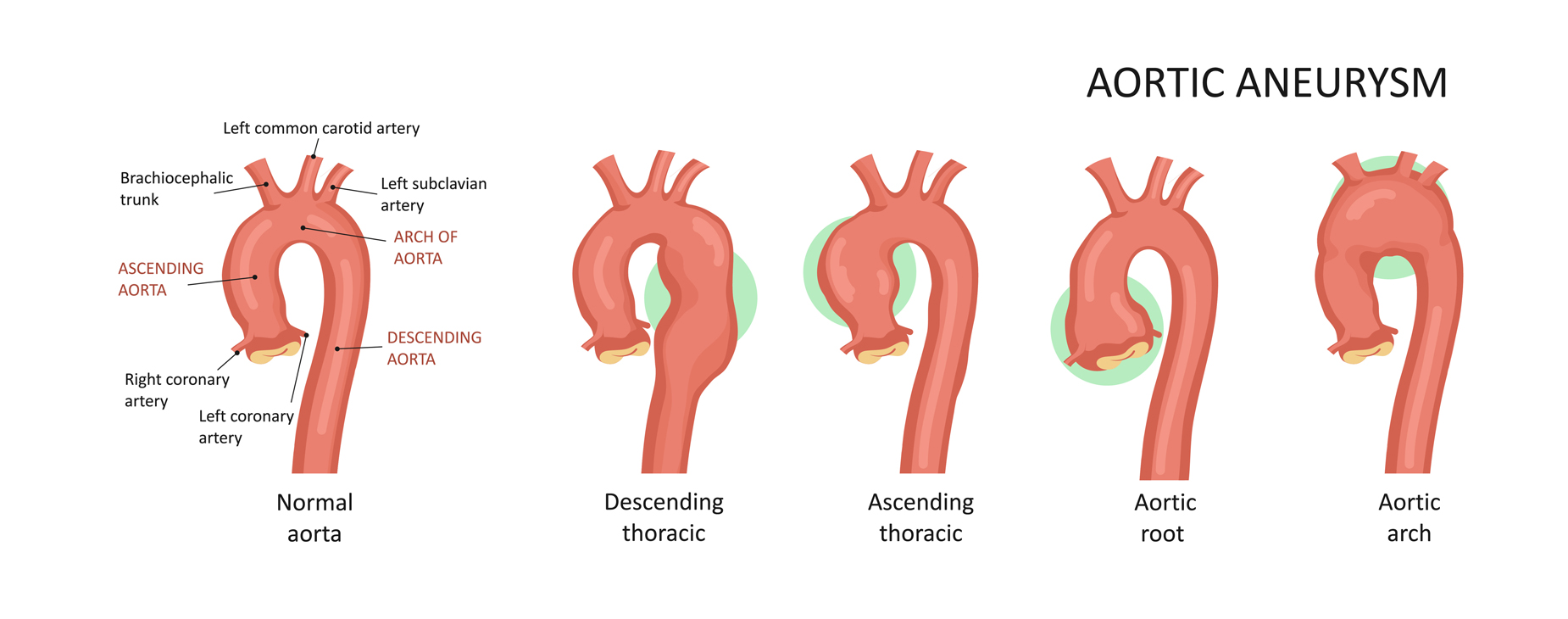Background
The aorta is the large artery that leaves the heart and delivers oxygen-risk blood throughout the body. It is divided into sections:
- The aortic root — this comprises the aortic valve and the sinuses of the aorta, which bulge outward and give rise to the coronary arteries that supply blood to the muscle of the heart itself.
- The ascending aorta — this runs upwards through the front of the chest from the aortic root, and has no branches.
- The aortic arch — this curves backwards at the top of the chest, and gives off the major arteries to the arms and head.
- The descending aorta — this runs downwards at the back of the chest, next to the spine, and gives off multiple branches including those to the spinal cord, before ending at the diaphragm.
The most common reason to need surgery on the aorta is to treat an enlarged aorta, or aneurysm. As the aorta enlarges, its wall weakens until it is at risk of either rupturing or tearing (termed aortic dissection). Either rupture or dissection may be fatal, or patients may survive to get to hospital and need emergency surgery which carries a very high risk. As a result, surgeons prefer to fix aneurysms of the aorta before they develop these dangerous complications.
Aneurysms often occur for no apparent reason, or they may be associated with atherosclerosis (fat and calcium buildup in the arteries), high blood pressure, or genetic conditions termed connective tissue disorders (such as Marfan syndrome, Loeys-Dietz syndrome, or Ehlers-Danlos syndrome).
In many cases, aneurysms of the aorta do not cause symptoms until they develop one of these complications, and often aneurysms are picked up on a CT scan or ultrasound. If aneurysms do cause symptoms (most commonly severe chest or back pain) then this may be a sign of impending trouble and medical assistance should be sought immediately.

